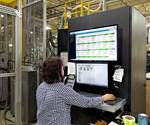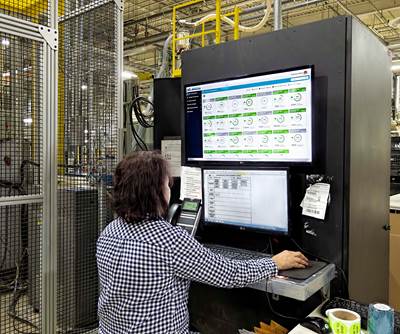The Role of Policy in Accelerating Advanced Recycling: How EPR Can Drive Circularity
Extended producer responsibility laws are emerging as a key mechanism to shift packaging waste management dynamics.
The plastics industry is facing increasing regulatory pressures to improve sustainability and recyclability. Extended producer responsibility (EPR) laws are emerging as a key mechanism to shift packaging waste management dynamics. These policies assign financial responsibility for the end-of-life management of packaging materials to producers, thereby incentivizing better design, higher recyclability and increased investment in recycling infrastructure.

Proponents of advanced recycling say that it can be used to process flexible plastics. Source: Getty
Advanced recycling (AR) presents a crucial opportunity to complement mechanical recycling and create viable end markets for hard-to-recycle plastics. Unlike traditional mechanical methods, which face limitations due to contamination and polymer degradation, AR technologies can process a wider range of plastic waste and produce high-quality feedstock suitable for new plastic production. This article explores how EPR can serve as a catalyst for AR growth while ensuring that policy frameworks foster innovation rather than creating barriers.
Understanding the U.S. Waste and Recycling Policy Landscape
The U.S. operates under a fragmented waste management system with regulations at the federal, state and local levels. Unlike Europe, which has more uniform and centralized recycling mandates, the U.S. lacks national recycling mandates. This has led to a patchwork of policies which vary significantly by region, creating both challenges and opportunities for plastics processors.
EPR introduces a structured approach, requiring producers to fund the end-of-life management of their packaging, encouraging more sustainable material choices. This can take the form of direct financial contributions to recycling programs or incentives for manufacturers to design packaging which is easier to recycle. While EPR laws aim to shift responsibility from municipalities to the private sector, their effectiveness depends on proper implementation, robust infrastructure and the inclusion of AR as a legitimate recycling pathway.
EPR’s Rapid Expansion and Its Impact on Recycling Markets
Over the past several years, EPR legislation has been enacted in five states, covering approximately 20% of the U.S. GDP. These laws require packaging producers to pay fees based on recyclability and material use, effectively incentivizing sustainable packaging design. This shift has the potential to significantly impact plastics processors, as increased demand for recycled content will reshape supply chains and material sourcing strategies.
One major impact of EPR is the anticipated increase in investment in collection, sortation and recycling infrastructure. However, the success of these programs hinges on the inclusion of AR as a viable recycling solution. If AR is fully integrated into EPR frameworks, it can help alleviate the burden on mechanical recycling systems by providing an alternative pathway for plastics that are currently landfilled or incinerated.
How Advanced Recycling Works
Advanced recycling technologies — such as pyrolysis, gasification and depolymerization — break down plastic waste into its molecular building blocks. Pyrolysis converts plastic into a synthetic crude oil, which can then be refined into new plastic monomers. Gasification uses high temperatures and controlled oxygen levels to create syngas, which can be turned into various chemical feedstocks. Depolymerization, a process particularly relevant for PET and polystyrene, breaks polymers down to their original monomers for reuse in new plastic production.
Compared to mechanical recycling, AR offers a more robust solution for
plastics processors. It eliminates concerns about contamination, maintains material performance and enables greater flexibility in sourcing recycled content. The ability to incorporate AR-derived feedstocks into existing manufacturing processes gives plastics processors more options to meet EPR and sustainability requirements without sacrificing product quality. As more states adopt EPR laws, demand for AR-derived materials is expected to grow, providing further opportunities for plastics processors to innovate and adapt.
Potential Barriers: How Some EPR Laws Can Hinder AR Growth
Despite its potential, AR faces several policy challenges. Some states are considering provisions that misclassify AR as disposal rather than a manufacturing process for recycled materials. This misclassification can result in AR facilities being subject to stricter regulations which do not apply to mechanical recycling, creating an uneven playing field.
Other regulatory barriers include duplicative permitting criteria, restrictions on feedstock sourcing and limitations on acceptable end markets for AR-derived materials. Restrictive definitions of “recycled content” can further prevent AR-derived materials from being counted toward sustainability targets, discouraging investment and limiting the expansion of these technologies.
For AR to thrive under EPR, policies must remain technology-neutral. This means acknowledging AR as a legitimate form of recycling and ensuring that regulations support, rather than hinder, its growth. Without these considerations, the full potential of EPR-driven circularity may not be realized.
Advanced Recycling: A Critical Component of EPR Success
Mechanical recycling, although essential, has limitations, particularly with mixed and contaminated plastics and end-market applications. In contrast, AR helps to fill the gap left by mechanical recycling, enables plastics which are traditionally considered “hard to recycle” — such as flexible films and multilayer packaging — into virgin-quality feedstocks, the building blocks of products in a wide range of end markets.
For plastics processors, AR opens the door to higher quality recycled materials which can be used in demanding applications, such as food-grade packaging and high-performance industrial components. With EPR driving demand for increased recycled content, AR can play a pivotal role in ensuring a steady supply of suitable raw materials.
Where EPR and AR Converge: Success Factors for Policy
Advanced recycling provides a scalable solution for hard-to-recycle plastics, but policies must support its integration.
Success factors for policy include:
- Technology-Inclusive Definitions: Policymakers must ensure that all recycling technologies which keep materials within the economic value chain are included in EPR frameworks. AR should be explicitly recognized as a legitimate pathway for converting plastic waste into end markets, enabling its outputs to count toward recycled content mandates.
- Material Neutrality: EPR programs should not dictate specific packaging material choices. Instead, they should incentivize recyclability by rewarding sustainable design practices regardless of material type. This approach will encourage innovation and enable processors to select the best materials for their applications while ensuring end-of-life sustainability.
- National Standards and Federal Support: A lack of regulatory consistency across states creates challenges for ´óĎó´«Ă˝es operating on a national scale. Federal coordination could help standardize key policy elements which affect interstate commerce, provide incentives for investment in recycling infrastructure, and ensure that AR is treated equitably across states and jurisdictions.
- Investment in Collection and Sorting: Producer fees generated through EPR programs should be allocated toward improving collection, sortation and recycling systems. Investing in infrastructure will ensure that more plastic waste is captured and directed to the most effective recycling processes, reducing contamination and increasing overall recycling rates.
Conclusion and Future Outlook
EPR has the potential to reshape packaging waste management, but its success depends on enabling a full suite of recycling technologies. As more states adopt EPR, the role of AR will be increasingly critical for achieving circularity goals. By recognizing AR as a vital component of EPR strategies, policymakers can help drive meaningful progress toward a more sustainable plastics industry.
The federal government can support these efforts through grants, tax incentives and standardizing policy elements that affect interstate commerce and facilitate the expansion of AR infrastructure. Additionally, collaboration between industry, policymakers and recyclers is essential to ensure that regulations promote, rather than inhibit, sustainable innovation.
For plastics processors, the evolving regulatory landscape presents both challenges and opportunities. Adapting to new EPR frameworks and leveraging AR as a source of high-quality recycled materials will be key to remaining competitive in a circular economy. By fostering technology-neutral regulations and aligning state and federal efforts, the plastics industry can position itself for long-term success in a rapidly changing market.
ABOUT THE AUTHOR: Rory Hunter has over 15 years’ experience in energy and chemicals, much of which was in environmental and regulatory across all sectors of the industry. Currently, Hunter is the sustainable products policy advisor for Shell Chemicals, after serving for four years on the startup of Shell’s world-class polyethylene facility in Monaca, Pennsylvania. Hunter is a licensed Pennsylvania attorney and earned an MBA at Penn State. Questions can be directed to: info@polymers.shell.com.
Related Content
Get Color Changes Right In Extrusion Blow Molding
Follow these best practices to minimize loss of time, material and labor during color changes in molding containers from bottles to jerrycans. The authors explore what this means for each step of the process, from raw-material infeed to handling and reprocessing tails and trim.
Read MoreFor Extrusion and Injection-Blow Molders, Numerous Upgrades in Machines and Services
Uniloy is revising its machinery lines across the board and strengthening after-sales services in tooling maintenance, spare parts and tech service.
Read MoreHow to Extrusion Blow Mold PHA/PLA Blends
You need to pay attention to the inherent characteristics of biopolymers PHA/PLA materials when setting process parameters to realize better and more consistent outcomes.
Read MoreImpacts of Auto’s Switch to Sustainability
Of all the trends you can see at NPE2024, this one is BIG. Not only is the auto industry transitioning to electrification but there are concerted efforts to modify the materials used, especially polymers, for interior applications.
Read MoreRead Next
Making the Circular Economy a Reality
Driven by brand owner demands and new worldwide legislation, the entire supply chain is working toward the shift to circularity, with some evidence the circular economy has already begun.
Read MoreLead the Conversation, Change the Conversation
Coverage of single-use plastics can be both misleading and demoralizing. Here are 10 tips for changing the perception of the plastics industry at your company and in your community.
Read MorePeople 4.0 – How to Get Buy-In from Your Staff for Industry 4.0 Systems
Implementing a production monitoring system as the foundation of a ‘smart factory’ is about integrating people with new technology as much as it is about integrating machines and computers. Here are tips from a company that has gone through the process.
Read More












